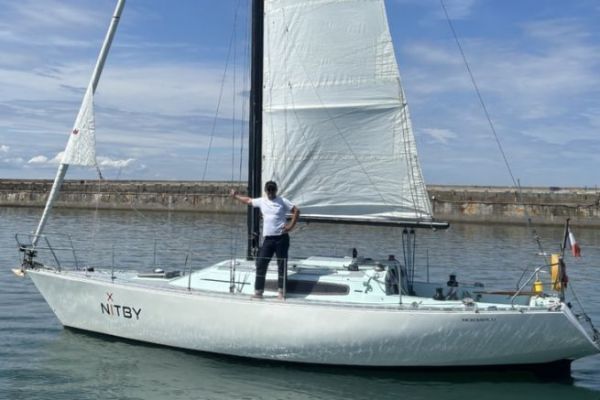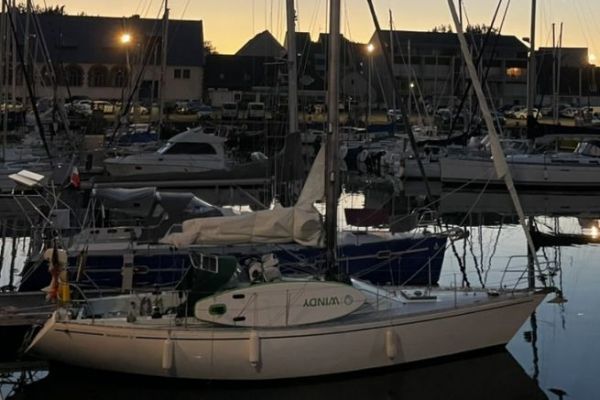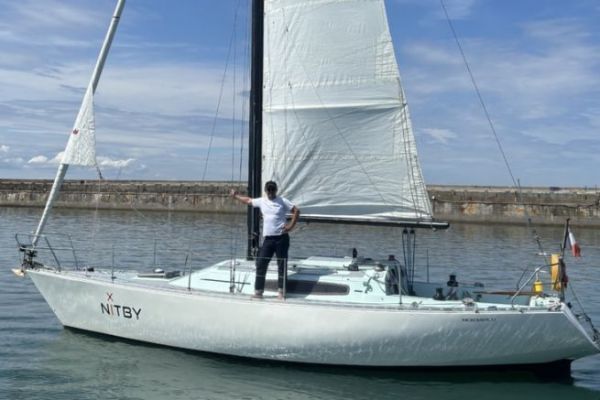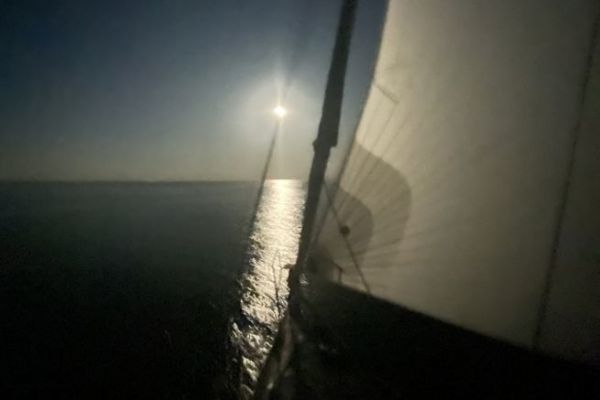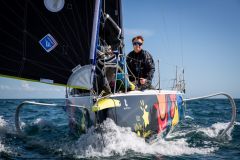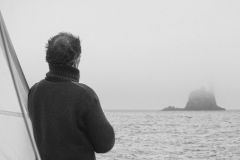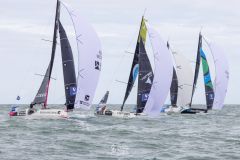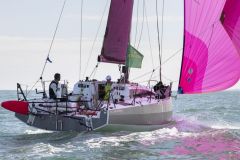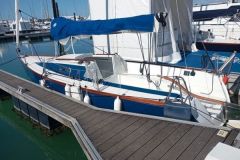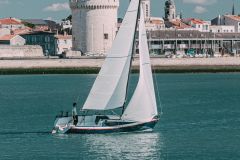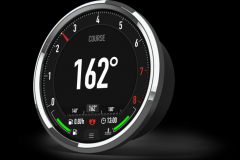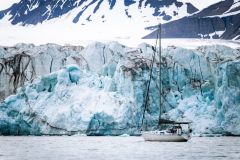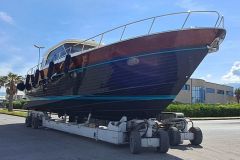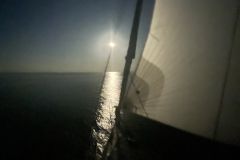Find out more about Nicolas' project published in January 2025.
Where to start?
Dreaming is good, but finding the path that leads to reality is better. I sketched out this project to bring this sailboat back to life based on my human values, with what the maritime vibe brings in terms of dreams and energy for landlubbers. These six winter months were divided into 3 phases: finding financing, preparing and renovating the boat, and setting up a crew.
Finding sponsors
I talk about it around me, put together a file based on what I glean from the internet and what seems coherent, with the help of friends more connected than me to commercial realities and the expectations of potential interlocutors, ready to invest for their image in this unusual project in ocean racing. Seabird will have the wings of a phoenix, hers to return to racing at the height of her 50 years, mine to return to the sea.
Through a series of e-mails, meetings and phone calls, it all worked out. A first sponsor NITBY supports me, and then technical partners such as MattChem, AD le Havre, MarineLed and soon Milwaukee.
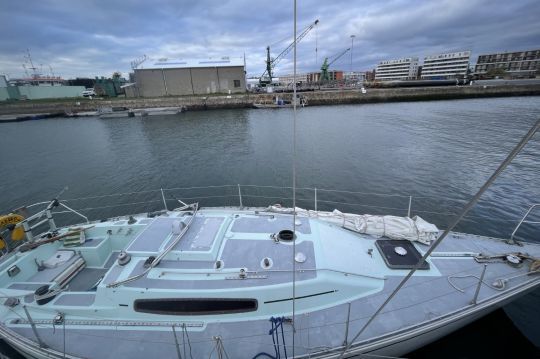
Restoring Seabird to its former glory
That's when things get real. The idea was to make Seabird worthy of wearing partner logos. Taking advantage of the spring vacations, I launch the second phase of the boat's refit, following the first project in July 2024, which gave me the opportunity to re-navigate.
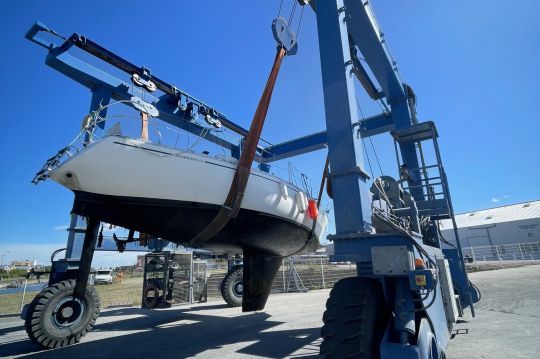
On the program: clean and beautiful:
- Deep deck scrubbing and gel coat revival with MattChem's concentrated hull and deck shampoo and Shine shampoo, the result is impressive, and combined with the quality of the period materials used by Camper & Nicholson, the boat has been rejuvenated beyond belief.
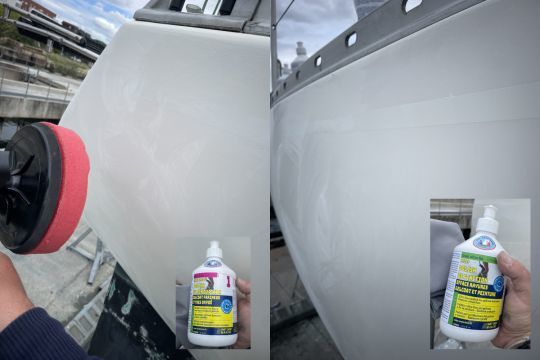
- Polish the hull with the dedicated three-step product suite. The result is equally impressive, even if it takes time and elbow grease.
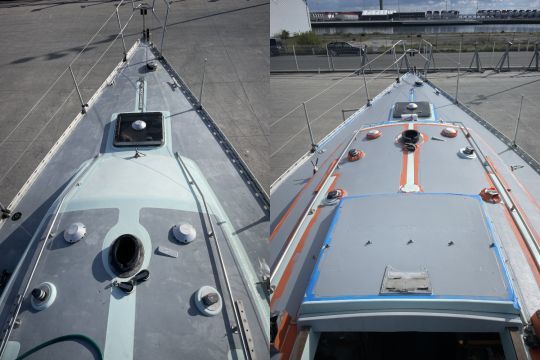
Mast and deck painting
For the deck, I applied two pots of Interdeck d'International to the painted parts of the deck. Unfortunately, my work was polluted by the glue from the masking tape I bought at a discount DIY store. Which I strongly recommend avoiding! Despite this inconvenience, the result is satisfactory.
Next to the deck, the mast. This time, I use black body spray paint. I apply two coats, protected by three coats of gloss varnish. Not too expensive supplies, but I hope they'll do the trick.
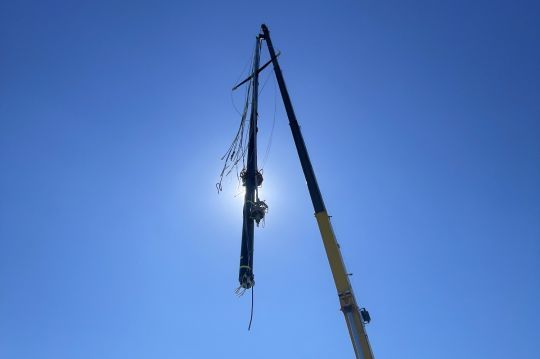
A thorough check-up of the entire mast
I take advantage of the boat's dismasting to change the masthead light. I opt for a Marineled system, which offers several advantages. The system is ingenious in that it combines three functions in a single bulb: tricolour main beam, white anchor light and even a distress flash. To change mode, all you have to do is "fiddle" with the on/off switch. So, with just one power supply (2 12 V wires), you have a triple light at the masthead. What's more, it's equipped with a light-sensitive cell that automatically switches off the light when it's daylight. Who's ever forgotten to turn off the anchor or main light?
The mast also lacked a jib light and deck spotlight, two undeniable safety features. Here again, I'm won over by the Marineled product, which has the advantage of being repairable.
I take advantage of this visit to the masthead to replace the old anemometer wind vane with a Garmin.
Originally, the purpose of the dismasting was to check the boat and replace the standing rigging. On this point, I'd like to thank AD Le Havre for their conditions. I installed new shrouds and a spinnaker halyard block. At the same time, I took the opportunity to replace the VHF antenna cable.
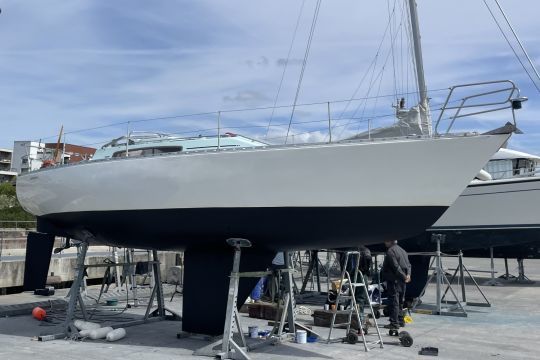
Back under the boat
After the renovation of the dead parts, it's time for the living parts, so that the yacht will glide smoothly next season. A bit of gelcoat on the bow, which had caressed one or two docks a little roughly, a few touch-ups on the keel, which had tickled the crabs, a good sanding and 5 liters of erodible black AD antifouling, and the hull was ready to be put back in the water.
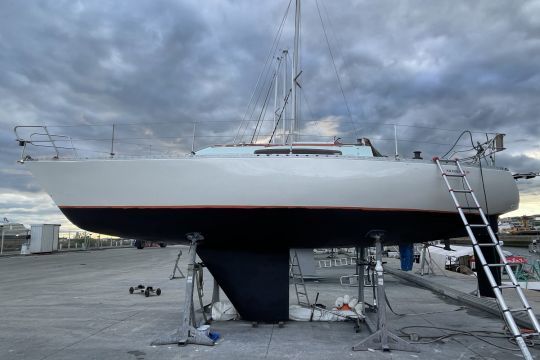
Fight against the hydrolube ring
With this in-depth tour of the submarine, I notice a nasty play in the propeller shaft. The stern tube is completely dead and seems intent on finishing its days, stuck in the shaft chair. It won't come out. I tried quite a few things before I dropped the rudder on one foot: blowtorch, WD 40, chisel, screwdriver, wire, saw blade... all to no avail. I have no desire to remove the propeller shaft, with the risk of damaging the hydrolube ring. I'm doing everything myself to save money, not to add to my expenses.
As I don't have much space between the rudder and the shaft chair, I decide to remove the rudder. I free it to be lowered, thus facilitating access to the area to be operated on. In relative haste, and pretty sure that it wouldn't come down easily, I start to feel its freedom without securing it. That's how he fell on my foot... At least the pain prevented him from falling to the ground!
The fact remains that this damn ring, like a nagging wedding band, absolutely refuses to budge. Finally, I find a 25 mm tube and cut it in three places. First bevelled, two bevelled cuts turn it into a formidable weapon. I add a straight piece of tube for hunting. I've fought so hard against this thing that destroying it with my lethal weapon is a pleasure. It's now fixed. More play, and so much more serenity.
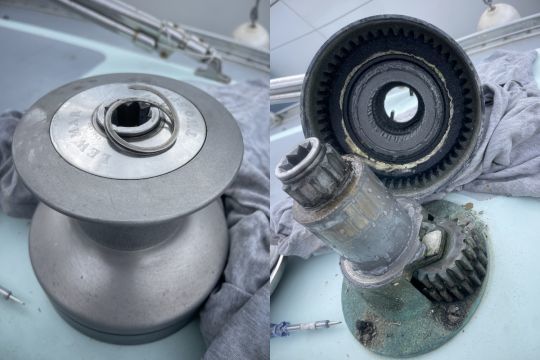
More routine maintenance
I continue the work by cleaning the deck fittings. The 3-speed winches are back to 3 speeds, those on the roof are smooth, as are the return pulleys.
I also find an almost new asymmetric spinnaker that its owner, touched by the adventure, agrees to sell me for a more than fair price. I pick it up in Saint-Malo.
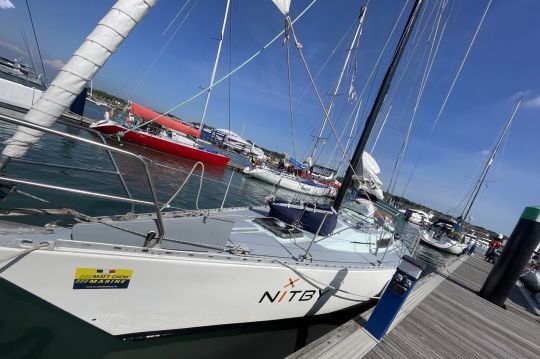
An inconclusive first trial
I finished the job the day before the start of La Cervantes. This race runs from Cowes to Le Havre, starting on May 3, 2025. The boat was functional, but not really ready. I hesitated to take the start, aware of the risks involved and the fatigue resulting from 3 weeks of work. But the forecast conditions - generally calm to very calm at first, then gradually building to 20 to 25 knots - the tenacious desire to go and see, and a kind of concretization of these efforts took precedence over caution. And as I know so often, when you hesitate to set off, it's better not to...
For this regatta, I have a new crew member, a photographer and videographer friend with a passion for sailing. But alas, much less focused on the Channel crossing, which is far from the coast, the cargo ships that scare you at night, the gales that blow and the fact that a boat like Seabird moves and gets wet. As a result, the crew member becomes a ballast bag, accumulating sometimes dangerous blunders, before disappearing into a bunk in the saloon. Two sleepless nights for me, one to go to Cowes, the other to return from Cowes with over 30 hours at the helm in solid conditions. Gusts, 40-knot winds and onboard glitches. I finish the course, but resign myself to giving up at the finish, too proud to bear being ranked last after so much effort.
No more computer for nav, no more power tools, a battery problem - which I was able to solve quickly thanks to the fact that I always had a new battery protected in a trunk - and the conviction that friends are great for a glass of water in a bistro, less so for sailing with ambitions.
This test highlights the points that need to be improved on the boat, and for me, who mainly sails single-handed, the seriousness that needs to be brought to the choice of crew.
I think a little "Black Cat" article will follow this one, as the subject can be so serious if you don't weigh up the quality of your team-mates enough before setting off. This is clearly overconfidence on my part. moitessier used to say, "Mise à la cape mentale". I've always liked that expression, which I can easily apply when the going gets tough. But for this test, it was clearly an excess of confidence on my part.
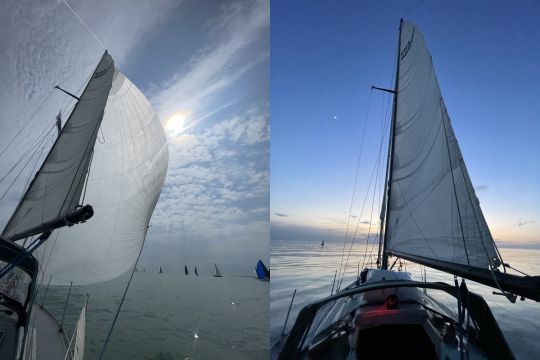
A young, motivated crew
Time to recover from the sequence of shipyard, race, failure... I talk to Alexandre Legallais, a friend of a friend who races with Michel Desjoyaux. He is kind enough to put me in touch with Baptiste Madic and Jeanne Bourse, two young sailors from the Orlabay center in La Trinité-sur-Mer who are aiming for the Figaro. Both are hungry for the open sea, curious about sailing the old-fashioned way, and eager to race the Fastnet.
The project is taking a turn that I really like: sharing experience and passing it on. My tens of thousands of miles at sea and their academic experience. We're more than twenty years apart, and the possibility of sailing with three people gives me wings. Especially as three crew members seems the perfect number for a boat of this size. Two on deck at all times, with four-hour watches, overlapping in two-hour shifts.
The future program is taking shape. I'm still fine-tuning the technical aspects of the boat, and we'll be leaving for La Trinité at the end of June. A nice running-in sail from Le Havre and three great races in sight: La Trinité-Cowes, Cowes-Dinard and the long-awaited Fastnet.
Among the technical tasks, I've just redone the boat's entire electrical circuit, which is the legacy of 50 years of cable on cable. It must have lost at least 10 kilos, which I gained in serenity, learning this chapter like the back of my hand. There's still the fitting of a bowsprit scheduled for June, and the installation of a new service battery pack, and the boat will be ready!
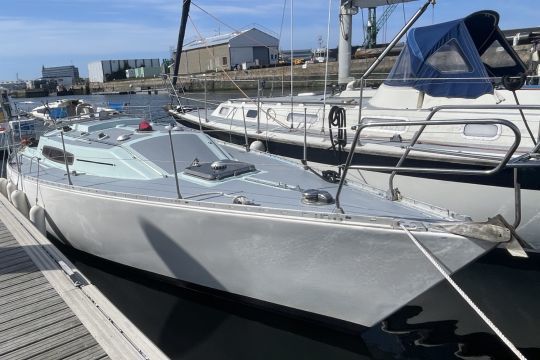
The serenity of sailing on a familiar boat
That's also the pleasure of boating, taking care of your boat like a rider prepares his horse. To follow up the project, I've created an association and filed its articles of association, which are in the process of being published. Obviously, institutional or personal support is welcome to bring this adventure, which is just the prelude to so many others, to a successful conclusion.
You can follow us on Instagram @seabird.on.the.rorc and on Ulule Seabird sur le RORC.

 /
/ 